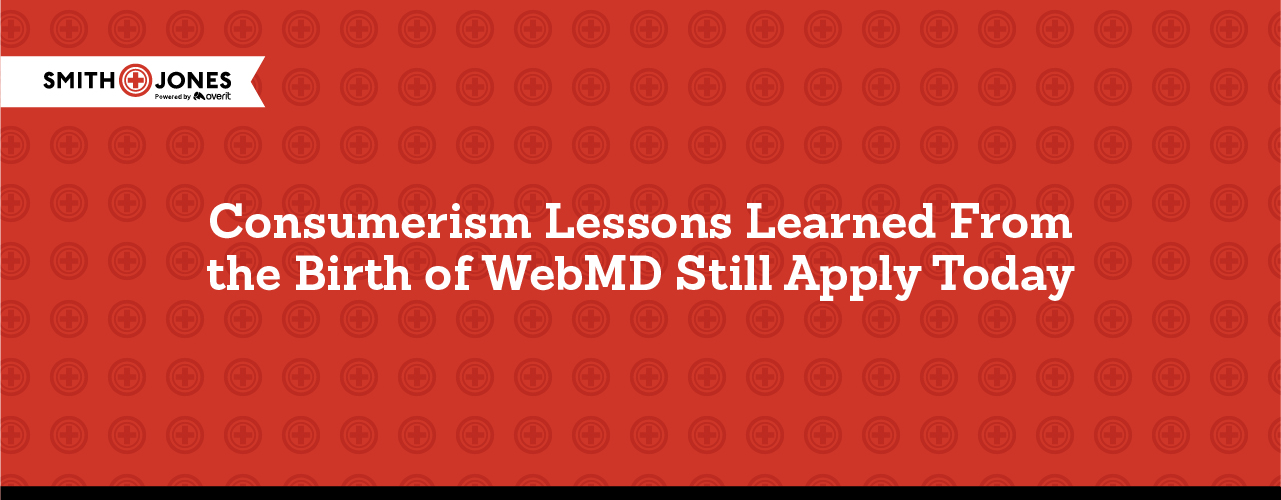Consumerism lessons learned from the birth of WebMD still apply today
The launch of WebMD in 1998 marked a revolutionary moment in the history of healthcare. By providing nearly instant access to medical information, health-related services, and a community of peers, WebMD empowered consumers to take a more active role in their healthcare. But at first, many physicians regarded that shift as an uninformed challenge to their expertise. A quarter century later, the lessons learned from WebMD’s launch still apply to the healthcare consumerism accelerated by retail medicine, telemedicine, and more cost-conscious consumers with high-deductible health plans.
When WebMD launched, it enabled consumers to access reliable medical information and services that were previously only available to healthcare professionals who spent decades in training to earn the white coat and claim the expertise associated with it. Through WebMD, consumers could learn about their medical conditions, ask questions about symptoms, and find out about treatment options. This gave consumers a greater understanding of their health and the ability to make more informed decisions about their care.
By the year 2000, WebMD saw 16 million unique visitors to their website per month. Twenty years later, the WebMD website received 127 million unique visitors to its website during the first quarter of 2020, most during the month of March, those earliest days of the COVID pandemic. Those statistics far and away outranked any other government, healthcare entity online, or any other possible resource. So, WebMD is firmly entrenched in the lives of consumers.
The recent rise of retail medicine from Amazon and Walmart is the second wave that is further driving healthcare consumerism. For one, it has made it easier for individuals to access medical services traditionally reserved for hospitals, clinics, and physician offices. It has made it more accessible and affordable for those who may not have the means, money, or time to wait. Furthermore, it has also allowed individuals to take more control over their healthcare by allowing them to compare prices (the bedrock of Walmart’s brand), and shop around for the best deals. In fact, Walmart signaled this shift in their model with the change in tagline from “Always the lowest price” to “Save Money. Live Better.”
The lessons learned from WebMD’s launch still apply to healthcare consumerism today. Consumers now have access to an unprecedented amount of medical information, health-related services, and communities of peers. While this has enabled consumers to take a more active role in their healthcare, it has also created a need for healthcare providers to better engage and educate consumers. And that’s the lesson learned that applies today.
Your clinical authority isn’t being questioned like that famous “God complex” scene from the movie “Malice” but your customer service and consumer engagement is. And hospitals and physicians also don’t have the resources to compete head-to-head with the retail giants. So, embrace it and work together with them on the information that they’ve gathered or the new services they tapped as they begin their healthcare journey. Use that self-diagnosis, or retail diagnosis, to accelerate your conversation and treatment with them.
Healthcare providers must also focus on providing consumers with accurate and up-to-date medical information. They must also continue to create educational materials that help consumers understand their medical condition and treatment options. By engaging and educating consumers, working with rather than pushing against the retail giants, healthcare providers can help embrace them and empower them to make more informed decisions about their care.
The launch of WebMD in 1998 revolutionized healthcare and empowered consumers to take a more active role in their healthcare. But a quarter century later, the lessons learned from WebMD’s launch still apply to healthcare consumerism fueled by retail medicine today. By providing access to medical information, partnering for health-related services, and accepting that you’re not the sole authority but part of a community of peers, healthcare providers can help empower consumers to make informed and efficient decisions about their care.
Further Reading
How Hospitals Can Compete With Consumer Brands
The Future of Consumer Reviews for Healthcare Organizations
LISTEN: Healthcare Rap Podcast: Making Brands Competitive In the Modern Marketplace

